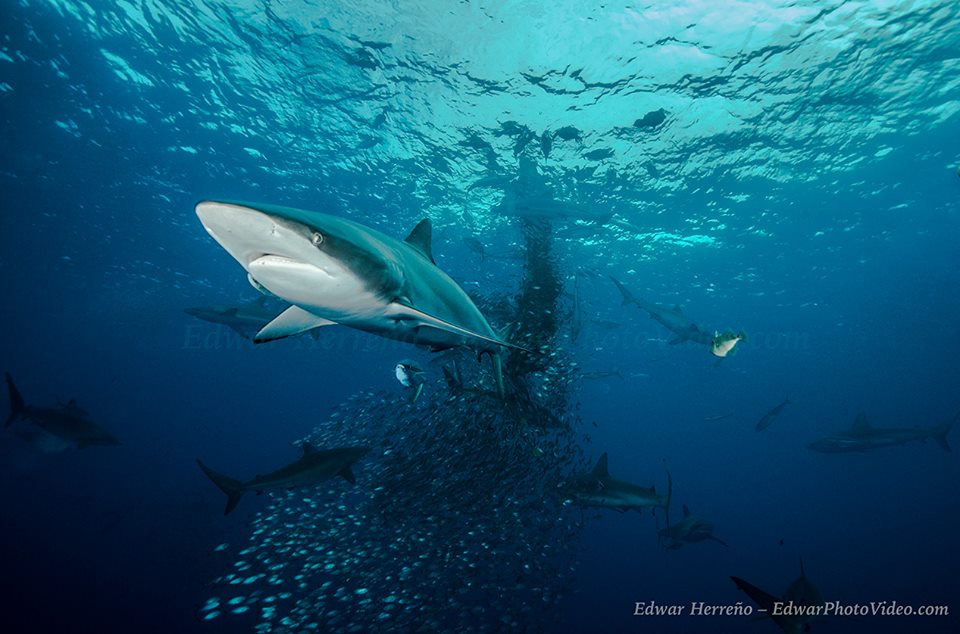Editor’s Note: Cocos Island National Park, Costa Rica is located 350 miles from the mainland in the Pacific Ocean and is a U.N. World Heritage Site. The waters of Cocos are highly diverse and have one of the highest biomasses of fish found anywhere in the world. It is also an important no-fishing sanctuary for many species of highly migratory species including large populations of hammerhead and other sharks. Turtle Island is involved in a study of its marine fauna focusing on sharks and turtles. This is blog 2 of 4 from the expedition. Read blog 1 here.
Diving in the presence of scores of sharks, dolphins, and yellowfin tuna tearing thorough a ball of baitfish underwater while brown boobies (seabirds) plunge diving from 50 feet into the air, to catch fish up to 6 feet below the surface is simply amazing!
Baitballs occurs when small fish school into a tightly packed ball as a defensive measure when they are threatened by predators. Often dolphins are credited with rounding up the “bait” fish, and pushing those fish toward the surface, where diving seabirds join in the feeding frenzy (and provide a way for researchers to locate baitballs). In addition to dolphins and seabirds, many other larger predatory fish are also attracted to the fury including sharks, tuna, and sailfish that shoot through the ball munching on the food bonanza.
Observing the abundance of wildlife, especially sharks and dolphins, at a baitball is one of the most exhilarating experiences of my life!

Recreational divers at Cocos Island are prohibited from diving in baitballs by Costa Rican Park Service rules, presumably for their own safety (due to the potential danger to divers getting too close while being surrounded by feeding sharks), and in order to obey the rules about swimming with and disturbing dolphins.
Since our research involves tagging various shark species, our research permit allows us to dive (carefully and respectfully) on baitballs to tag species like silky sharks, who are not usually found at the usual Cocos dive spots. And on this trip we had the unusual opportunity to observe several baitballs tagging both a silky and Galapagos shark in the process!
Summary of Data Collected: Over our 7-days/21-dive research schedule, we managed to tag eight hammerhead sharks, two Galapagos sharks, and one silky shark. We also collected nine tissue samples for genetic and stable isotope analysis from hammerhead and white-tip reef sharks, and photographed and videotaped hundreds of sharks for photo-id analysis. Shark and ray relative abundance surveys were also conducted on nine dives as part of our long-term monitoring protocol. Only two turtles were observed: one hawksbill being targeted by a tiger shark; and one unidentified species that surfaced briefly to breathe and then quickly disappeared. Mark Stabb identified 91 different species of fish on this trip, including one not currently listed as occurring at Cocos Island.



